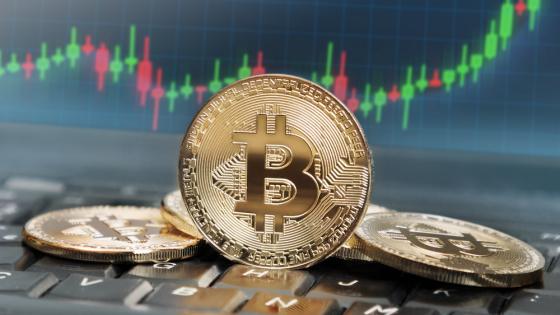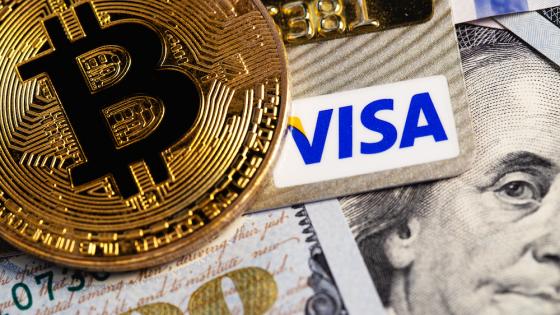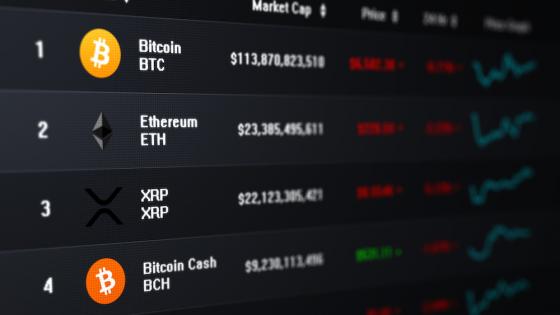The durability, stability, and scalability of the Bitcoin network1 is impressive. And the potential of blockchain outside the areas of digital assets and finance has still not been fully explored. Still, several authors are raising doubts on Bitcoin’s underlying technology and concept (e.g. Avoca 2021, Acemoglu 2021, Bindseil, et al. 2022). The ‘proof-of-work ‘concept is a constituting feature of the Bitcoin system. It has a scalable difficulty level and aims to incentivise miners to keep the system running. The more computing capacity and the faster the validation process takes place, the safer the whole system will be. Still, the ability of the technology to keep up in a quantum computing environment is being questioned, and the governance of necessary in-depth changes has been made deliberately difficult. Moreover, the proof-of-work concept, which is a necessary condition for the security of the system, wastes power and is an environmental polluter without compare: Bitcoin may consume as much energy as all data centres globally (Digiconomist 2021).
Bitcoin is not a currency and unlikely to be sustainable as an investment
A consensus has emerged that Bitcoin fails in its original objective of being a currency. It is too volatile to fulfil the classic functions of money (a unit of account, means of payment, and store of value). Moreover, incentivising the maintenance of a system without a central authority is cumbersome and expensive. The number of transactions the Bitcoin network can handle per second is low and fees are high (currently between US$2.5 and $4 per transaction; Avoca 2021). Merchants and customers hardly accept it outside of niches.
One of the most popular arguments among Bitcoin supporters is that the limited supply of Bitcoin would make it an asset to protect against inflation, while fiat money, which can be multiplied at will, would increasingly lose value. However, even if Bitcoin could become the new global money, its technically fixed ‘money supply’ would lead the world into a deflation trap, as growing economies need additional liquidity.
Likewise, the comparison to gold fails. As Taleb (2021) argues, gold is both used industrially and was appreciated as jewellery for centuries before it became an investment asset or a reserve currency. Moreover, gold does not degenerate over time and easily retains its value even in extreme situations like natural catastrophes.
What follows is that the market valuation of Bitcoin is purely based on speculation: its market rally only continues as long as the Bitcoin community's belief about Bitcoin's alleged advantages can be maintained. But enthusiasm alone is not enough in the long run, as Bitcoin is in the end only a number chain and technologies are replaced by better technologies – with the newer soon displacing the new.
The high private and social cost of the Bitcoin network
The longer the boom lasts, and the higher the valuation Bitcoin reaches, the higher the cost for society will be in the end. Investments are made in fear of missing out, neglecting the risks. Bitcoin comes with significant private costs for energy and hardware to run the network. As Bitcoin does not generate value for society apart from hopes for speculative gains, these private costs will represent a net loss for society when the music stops.
Take the problem of environmental pollution. Even if the negative externalities of energy consumption were priced by taxes in many countries, geographical arbitrage would cause a further concentration of mining in locations with the lowest taxation. Some have argued to locate Bitcoin mining to locations where energy is quasi-free (e.g. Iceland with its abundance of geothermal energy, or next to a volcano in El Salvador). But why haven’t these locations attracted other energy-intensive activity with limited geographical constraints before?
Moreover, it has been common knowledge for years that the Bitcoin network has facilitated criminal activities by providing a means of illicit payments. There is a long list of shady operators and market manipulation that have marked Bitcoin's history on the supply side (e.g. Dunn 2021). Moreover, Bitcoin has been popular for financing the activities of criminals below the radar of law enforcement and regulatory authorities. Drug trafficking, money laundering, terrorist financing, ransom and extortion are popular areas of use.
The regulatory mindset is changing
The broad use of Bitcoin for illicit activities was recognised early. The shutting down of the darknet marketplace Silkroad back in 2013 (Time 2013) revealed the extensive illicit use of Bitcoin. In 2014, the money laundering and terrorist financing related to cryptoassets became a focus of the Financial Action Task Force (FATF), which in 2019 issued its guidance demanding national implementation and enforcement. If fully implemented, providers of services in cryptoassets would have to apply AML/CFT measures, such as customer due diligence and the checking and reporting of suspicious transactions. The illicit usage of Bitcoin would become more difficult, in particular when exchanging into fiat currency or purchasing goods and services.
Several reasons might explain why overall the implementation of effective measures against the illicit use of Bitcoin has been somewhat slow despite the large scale of the problem. First, the potential social risks may have been underestimated because of the relatively small size and the assumed absence of leverage in the crypto market; at least, a fundamental threat to global financial stability was not diagnosed. Second, responsibilities for Bitcoin seem fragmented as it raises multi-faceted threats. For instance, concerns were first mainly related to money laundering and terrorist financing, while awareness of its frequent use for ransom payments occurred only later, followed more recently by environmental, consumer, and investor protection concerns. Third, many aspects of Bitcoin are fundamentally new and do not fit into existing regulation, and hence raise challenges. Fourth, the vested interests of large Bitcoin holders and financial service providers might have led to increased lobbying activities.
Still, several jurisdictions have already taken or are preparing measures to regulate Bitcoin and other cryptoassets. The spectrum of approaches is wide, however, ranging from completely banning cryptoasset business to more inclusive approaches of licensing and supervising intermediaries. The latter aim at bringing crypto assets ‘within the regulatory perimeter’ to address risks but also support possible benefits of innovation (e.g. Cunliffe 2021).
While there has been progress towards a consistent and effective regulation of cryptoassets, Bitcoin’s market capitalisation reached new peaks in November 2021. Some measures by public authorities may have contributed to these peaks. For example, authorities did not prevent the first launch of a futures-based Bitcoin ETF in the US (while Bitcoin spot market ETFs were rejected), and in Germany a law allowed investment funds for institutional investors to invest 20% of assets in crypto. For investors, such public measures or inaction are indications of the future policy stance and appear to legitimise Bitcoin. Moreover, they facilitate the integration of Bitcoin into the traditional financial systems. Overall, the net effect of authorities’ recent measures on Bitcoin were therefore ambiguous. They could have added to Bitcoin’s eventual total cost for society, which go beyond its use for illicit payments.
Conclusion
As also argued by others (Taleb 2021, Dunn 2021, Roubini 2021), we believe that the sustainability of Bitcoin is questionable. If Bitcoin eventually collapses, the net social cost of its lifecycle will be huge. Without any positive contribution of Bitcoin to society, its gross and net social costs will be equal: adding up the energy consumption, hardware usage of the network, the investment in human and technical capital – that will all have to be written off entirely. Moreover, the social fabric will be damaged when retail investors find that their savings are lost, while early investors who got out before the music stopped will have enriched themselves at their expense.
Public policymakers have been too slow to address all the problems related to Bitcoin. In the meantime, Bitcoin is becoming a pseudo-normal asset class for everyone, without its risks being understood. While regulators have launched measures to fight the reliance on Bitcoin for illicit purposes, the non-intermediated use of the Bitcoin network is still largely out of regulators’ reach. Further regulatory efforts are needed that effectively address all kinds of illicit payments through Bitcoins. The principle of ‘same function, same risks, same rules’ is to be applied consistently.
The year 2021 has seen several supportive initiatives, such as the approval (or at least the non-prohibition) of futures-based Bitcoin ETFs trading. This was likely an important driver of the Bitcoin price surge in autumn. Authorities need to be careful to not contribute to renewed investment flows into Bitcoin that will increase its market capitalisation and hence the scale of its eventual cumulated social cost.
Authors’ note: The views expressed in this column are the ones of the authors and not necessarily the ones of the ECB. We would like to thank Fiona van Echelpoel, Jean-Francois Jamet, Anton van der Kraaij, Mirjam Plooij and Pedro Miguel Bento Pereira Da Silva for useful comments. All remaining errors are ours.
References
Acemoglu, D (2021), “The Bitcoin Fountainhead”, Project Syndicate, 5 October.
Aggarwal, D, G K Brennen, T Lee, M Santha and M Tomamichel (2017), “Quantum attacks on Bitcoin, and how to protect against them”, Quantum Physics.
Avoca (2021), “Bitcoin: a trojan horse”, 14 October.
Bindseil, U, P Papsdorf and J Schaaf, (2022), “Bitcoin – the encrypted threat”, SUERF policy brief.
Böhme, R, N Christin, B Edelman and T Moore (2015), “Bitcoin: Economics, Technology, and Governance”, Journal of Economic Perspectives 29(2): 213–238.
Cunliffe, J (2021), “Is ‘crypto’ a financial stability risk?”, speech at Sibos, 13 October.
Digiconomist (2021), “Bitcoin may consume as much energy as all data centers globally”, 10 March.
Dunn, W (2021), “Bitcoin’s gold rush was always an illusion”, The New Statesman, 20 July.
FATF (2014), "Virtual Currencies: Key Definitions and Potential AML/CFT Risks”, June.
FATF (2019), “Guidance for a Risk-Based Approach to Virtual Assets and Virtual Asset Service Providers”, June.
Nakamoto, S (2008), “Bitcoin: A Peer-to-Peer Electronic Cash System”, Bitcoin Foundation, November.
Roubini, N (2021), “Bitcoin is not a hedge against tail risk”, Financial Times, 10 February.
Taleb, N (2021), “Bitcoin, currencies, and fragility”, Quantitative Finance, published online.
Time (2013), “Everything You Need to Know About Silk Road, the Online Black Market Raided by the FBI”, 4 October.
US Treasury (2021), “President’s Working Group on Financial Markets Releases Report and Recommendations on Stablecoins”, 1 November.
Endnotes
[1] In 2007, a group of software developers invented a completely decentralised booking concept (Nakamoto 2008) to build the foundation for a global digital money without government; in January 2009, the Bitcoin network became operational. There is no central authority, but a global network of computers which control, monitor, and store the entire information – without revealing the identity of the users. Transactions are irreversible, regardless of the reason. The maximum total number of Bitcoins is technically limited to about 21 million, of which almost 19 million are already in circulation (for an overview of the functioning the Bitcoin network, see Böhme et al. 2015).





